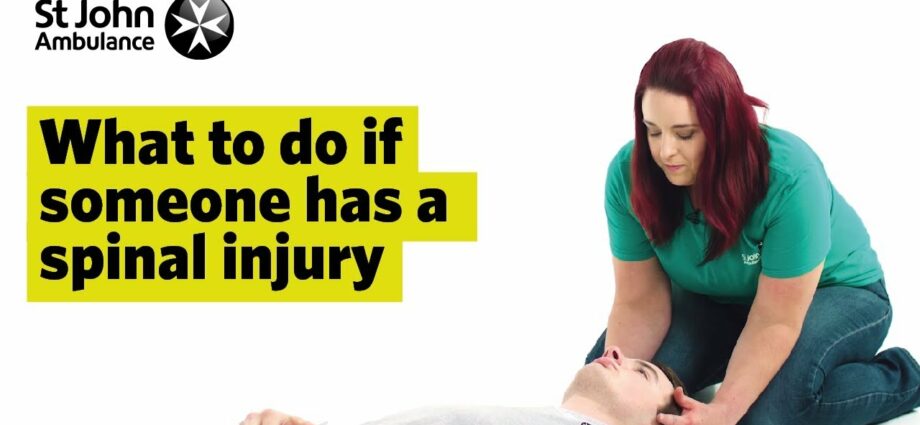Contents
What to do in case of spinal hyperostosis?
Spinal hyperostosis is a disease that results in ossification of the entheses, that is, areas of attachment on the bone of the ligaments, tendons and the joint capsule, along the spine. For some reason, the cells responsible for building bones are depositing calcium in places where they shouldn’t. The most likely scenario is that genetic and environmental factors play a role in the onset of this condition. This can cause pain and stiffness. If the neck is affected, bone growth can put pressure on other body structures, which can cause difficulty in breathing or swallowing. People with spinal hyperostosis can lead active and productive lives when they receive the right treatment. Its objectives are to maintain the flexibility of the joints to reduce joint pain and prevent limitations in terms of mobility and functioning.
What is spinal hyperostosis?
This rare disease, which can affect several members of the same family, is also called:
- ankylosing vertebral hyperostosis;
- sheathing vertebral hyperostosis;
- spinal melorheostosis;
- diffuse idiopathic vertebral hyperostosis;
- or the disease of Jacques Forestier and Jaume Rotés-Quèrol, named respectively for the French doctor and the Spanish rheumatologist who described it in the 1950s.
Vertebral hyperostosis is the second most common cause of cervical myelopathy, after cervicarthrosis. Very rare in people under 40, it usually manifests after 60 years. Men are twice as affected as women. It is most often observed in obese subjects suffering from a vascular disease sometimes accompanied by diabetes and hyperuricemia, i.e. an increase in the level of uric acid in the body. .
What are the causes of spinal hyperostosis?
The causes of spinal hyperostosis are still poorly defined. For some reason, the cells responsible for building bones are depositing calcium in places where they shouldn’t. The most likely scenario is that genetic and environmental factors play a role in the onset of this condition.
Type 2 diabetes appears to be a significant risk factor, since 25 to 50% of patients with spinal hyperostosis are diabetic and spinal hyperostosis is found in 30% of type 2 diabetics.
It has also been observed that a prolonged intake of vitamin A can lead to the onset of the first symptoms of the condition in young subjects. Finally, subjects already suffering from osteoarthritis of the back are more prone to develop this disease.
What are the symptoms of spinal hyperostosis?
It may take a long time for spinal hyperostosis to openly manifest itself. Indeed, people with spinal hyperostosis are most often asymptomatic, especially at the onset of the disease. They may, however, complain of pain and stiffness in the back or joints, making movement difficult.
Usually, the pain occurs along the spine, anywhere between the neck and lower back. The pain is sometimes more severe in the morning or after a prolonged period of inactivity. Usually it does not go away for the rest of the day. Patients may also experience pain or tenderness in other parts of the body such as the Achilles tendon, foot, kneecap, or shoulder joint.
Other symptoms include:
- dysphagia, or difficulty swallowing solid foods, related to compression of the hyperostosis on the esophagus;
- neuropathic pain, sciatica or cervico-brachial neuralgia, related to compression of the nerves;
- vertebral fractures;
- muscle weakness;
- fatigue and difficulty sleeping;
- depression.
How to treat spinal hyperostosis?
There is no treatment, neither preventive nor curative for vertebral hyperostosis. The disease is in most cases well tolerated. The low intensity of symptoms often contrasts with the level of spinal involvement seen on x-rays.
People with spinal hyperostosis can lead active and productive lives when they receive the right treatment. Its objectives are to reduce joint pain, maintain joint flexibility and prevent limitations in terms of mobility and functioning.
In order to help the patient to control the pain and reduce stiffness, he may have recourse to symptomatic treatment based on:
- analgesics such as paracetamol;
- nonsteroidal anti-inflammatory drugs (NSAIDs);
- corticosteroids.
Management by physiotherapy or chiropractic can help limit stiffness and improve patient mobility. Physical activity and moderate stretching are also an important aspect of management. They can ease fatigue, relieve joint pain and stiffness, and help protect joints by strengthening the muscles around them.
In the event of digestive (dysphagia) or nervous (neuropathic pain) damage, a surgical intervention called decompression, aimed at removing the osteophytes, that is to say the bony growths, may be necessary.










